BMW X3 vs BYD Tang – Differences & prices compared
Compare performance, boot space, consumption and price in one view.
Find out now: which car is the better choice for you – BMW X3 or BYD Tang?
The BMW X3 (SUV) comes with a Petrol MHEV, Diesel MHEV or Plugin Hybrid engine and Automatic transmission. In comparison, the BYD Tang (SUV) features a Electric engine with Automatic transmission.
When it comes to boot capacity, the BMW X3 offers 570 L, while the BYD Tang provides 235 L – depending on how much space you need. If you’re looking for more power, decide whether the 398 HP of the BMW X3 or the 517 HP of the BYD Tang suits your needs better.
In terms of consumption, the values are 2.80 L per 100 km for the BMW X3, and 24 kWh for the BYD Tang.
Price-wise, the BMW X3 starts at 50900 £, while the BYD Tang is available from 59700 £. Compare all the details and find out which model fits your lifestyle best!
BMW X3
The BMW X3 stands out in the competitive SUV market with its refined blend of performance and luxury. Its interior boasts high-quality materials and a design focused on driver comfort and convenience. With a robust engine lineup, the vehicle offers a balanced driving experience that caters to both urban settings and off-road adventures.
details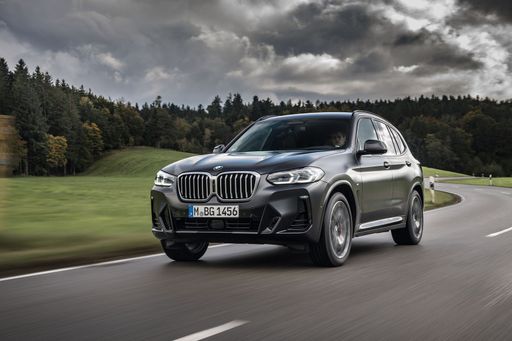 @ press.bmwgroup.com
@ press.bmwgroup.com
 @ press.bmwgroup.com
@ press.bmwgroup.com
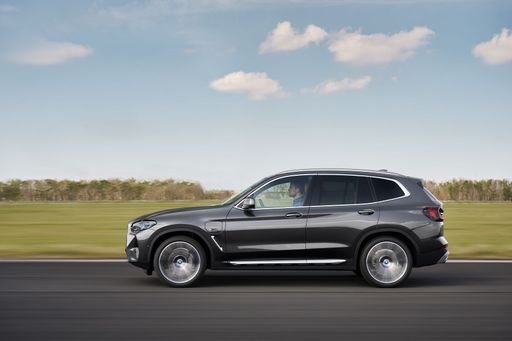 @ press.bmwgroup.com
@ press.bmwgroup.com
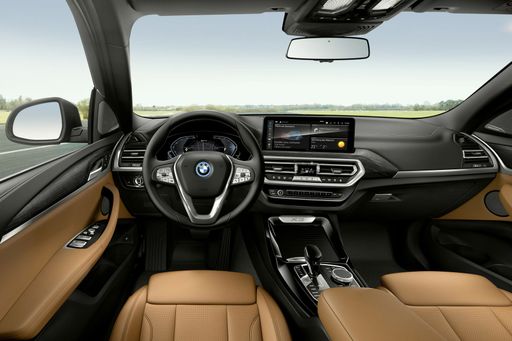 @ press.bmwgroup.com
@ press.bmwgroup.com
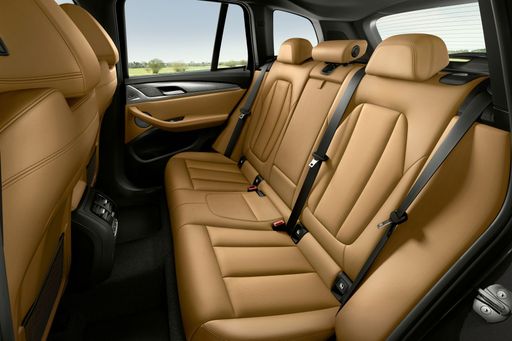 @ press.bmwgroup.com
@ press.bmwgroup.com
BYD Tang
The BYD Tang represents a bold entry into the competitive SUV market, blending cutting-edge technology with modern design aesthetics. Its spacious interior is complemented by high-quality materials and innovative features, making it a strong contender for families and tech enthusiasts alike. With an emphasis on sustainability, the Tang offers an eco-friendly driving experience without compromising on performance or luxury.
details @ press.bydauto.be
@ press.bydauto.be
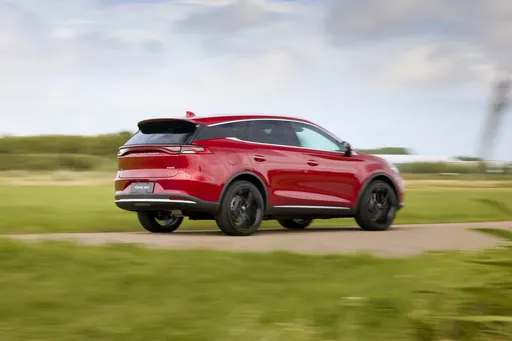 @ press.bydauto.be
@ press.bydauto.be
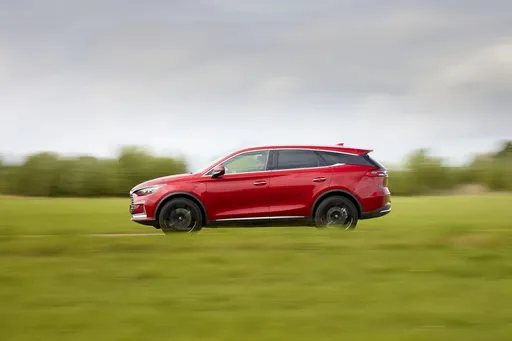 @ press.bydauto.be
@ press.bydauto.be
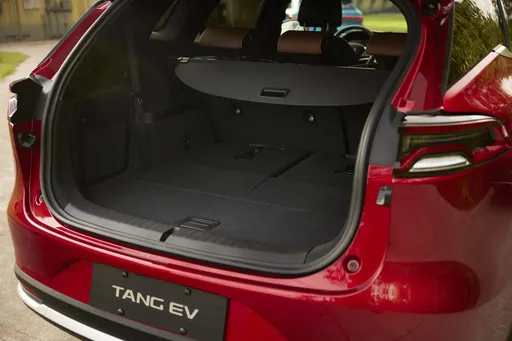 @ press.bydauto.be
@ press.bydauto.be
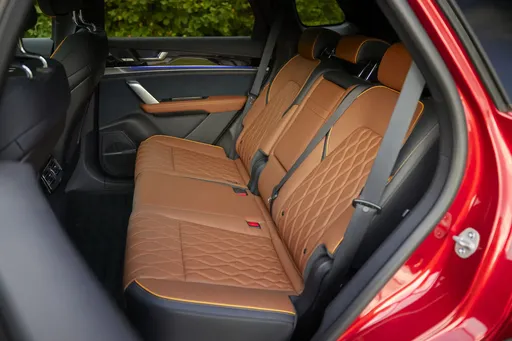 @ press.bydauto.be
@ press.bydauto.be

|

|
|
|
|
Costs and Consumption |
|
|---|---|
|
Price
50900 - 72400 £
|
Price
59700 £
|
|
Consumption L/100km
2.8 - 7.7 L
|
Consumption L/100km
-
|
|
Consumption kWh/100km
-
|
Consumption kWh/100km
24 kWh
|
|
Electric Range
88 km
|
Electric Range
530 km
|
|
Battery Capacity
19.70 kWh
|
Battery Capacity
-
|
|
co2
64 - 175 g/km
|
co2
0 g/km
|
|
Fuel tank capacity
50 - 65 L
|
Fuel tank capacity
-
|
Dimensions and Body |
|
|---|---|
|
Body Type
SUV
|
Body Type
SUV
|
|
Seats
5
|
Seats
7
|
|
Doors
5
|
Doors
5
|
|
Curb weight
1930 - 2140 kg
|
Curb weight
2630 kg
|
|
Trunk capacity
460 - 570 L
|
Trunk capacity
235 L
|
|
Length
4755 mm
|
Length
4970 mm
|
|
Width
1920 mm
|
Width
1955 mm
|
|
Height
1660 mm
|
Height
1745 mm
|
|
Payload
570 kg
|
Payload
575 kg
|
Engine and Performance |
|
|---|---|
|
Engine Type
Petrol MHEV, Diesel MHEV, Plugin Hybrid
|
Engine Type
Electric
|
|
Transmission
Automatic
|
Transmission
Automatic
|
|
Transmission Detail
Automatic Gearbox
|
Transmission Detail
-
|
|
Drive Type
All-Wheel Drive
|
Drive Type
All-Wheel Drive
|
|
Power HP
197 - 398 HP
|
Power HP
517 HP
|
|
Acceleration 0-100km/h
4.6 - 7.8 s
|
Acceleration 0-100km/h
4.90 s
|
|
Max Speed
215 - 250 km/h
|
Max Speed
190 km/h
|
|
Torque
330 - 670 Nm
|
Torque
680 Nm
|
|
Number of Cylinders
4 - 6
|
Number of Cylinders
-
|
|
Power kW
145 - 293 kW
|
Power kW
380 kW
|
|
Engine capacity
1995 - 2998 cm3
|
Engine capacity
-
|
General |
|
|---|---|
|
Model Year
2024 - 2025
|
Model Year
2024
|
|
CO2 Efficiency Class
F, E, B
|
CO2 Efficiency Class
A
|
|
Brand
BMW
|
Brand
BYD
|
BMW X3
Introducing the BMW X3: A Blend of Power and Innovation
The BMW X3 is a testament to the brand’s commitment to merging luxury with cutting-edge technology. This SUV not only offers impressive on-road performance but also showcases innovative features that cater to both petrolheads and eco-conscious drivers.
Powerful Performance Across the Range
The BMW X3 comes with various powertrain options to suit diverse driving preferences, ranging from efficient plug-in hybrids to powerful petrol and diesel mild-hybrids. With performance outputs ranging from 184 PS to an impressive 510 PS, the X3 proves its versatility on the road. Paired with BMW's renowned automatic transmission, each model offers a smooth and responsive driving experience complemented by the brand's xDrive all-wheel-drive system.
Leading-Edge Hybrid Technology
Among the X3's portfolio, the plug-in hybrid variants stand out with their optimal balance between efficiency and performance. These models boast electric-only ranges up to 90 km, ideal for urban driving with minimal emissions. Meanwhile, the mild-hybrid systems enhance efficiency by recuperating energy during deceleration and supporting the combustion engine, optimizing fuel consumption ranging from 0.9 L/100km to 10.8 L/100km depending on the model.
Contemporary Design with Practical Features
From a design perspective, the BMW X3 maintains its iconic SUV silhouette, characterized by robust proportions and sleek, aerodynamic lines. With dimensions of up to 4755 mm in length and a luggage capacity of up to 570 litres, it caters to both style enthusiasts and practical users. Additionally, the interior showcases BMW’s commitment to sophistication, featuring high-quality materials, state-of-the-art infotainment systems, and comprehensive driver-assistance technologies.
Efficiency Meets Performance
The X3's impressive performance figures are complemented by its responsible approach to CO2 emissions, aligning with EU efficiency standards. Enhanced by its comprehensive suite of driver aids and intelligent safety features, the X3 ensures both the thrill of driving and peace of mind.
Conclusion: The Ultimate Driving Companion
In essence, the BMW X3 represents the perfect intersection of dynamic performance, fuel efficiency, and modern-day technology. With options catering to diverse needs and preferences, it remains a leading choice for drivers seeking versatility, innovation, and luxury.
BYD Tang
Introducing the BYD Tang: A Leap into the Future
The BYD Tang marks a significant step forward in the automotive industry, blending innovative technology with an eco-friendly ethos. As a fully electric SUV, it represents a sophisticated fusion of power and efficiency.
Revolution in Power: Electrifying Performance
Under the bonnet of the BYD Tang lies a remarkable electric engine, boasting 517 PS (380 kW). This powerhouse delivers an astonishing torque of 680 Nm, enabling it to accelerate from 0 to 100 km/h in just 4.9 seconds. Such figures catapult the Tang into the upper echelons of electric vehicles, making it a thrilling option for those who seek performance without compromising on sustainability.
Efficiency Meets Range: A Sustainable Choice
The Tang’s prowess is not just about speed; it’s also about efficiency. Achieving a consumption rate of 24 kWh/100 km and offering a substantial electric range of 530 km, the BYD Tang ensures that drivers can travel far and wide with confidence. With an unparalleled range in its class, it’s a vehicle designed for both urban commuting and long-distance travel.
Innovative Design: Form Meets Functionality
The BYD Tang’s design does more than just catch the eye. With a length of 4970 mm, a width of 1955 mm, and a height of 1745 mm, it offers a commanding presence on the road. Despite its robust silhouette, the Tang is designed with aerodynamics in mind, ensuring minimal resistance and maximising its driving range.
Driving Comfort: Luxury Redefined
Inside the Tang, luxury is the standard. The spacious interior accommodates up to seven passengers, making it an ideal choice for families. Advanced technological features enhance the driving experience, ensuring comfort and connectivity on every journey.
Environmental Consciousness: Leading the Charge
The BYD Tang shines in terms of sustainability, boasting a CO2 efficiency class of A and producing 0 g/km of CO2 emissions. These credentials not only qualify it as an environmentally friendly option but also as a leader in the transition towards a greener future.
Conclusion: The Future is Electric
The BYD Tang embodies the future of automotive engineering—a future that is clean, efficient, and exciting. Priced at €69,615, it offers a compelling option for those who wish to embrace electric mobility without sacrificing the amenities and performance they’ve grown accustomed to. Whether for city driving or adventurous road trips, the Tang is poised to lead the charge.
Which drive types are available for the BMW X3?
Available as All-Wheel Drive.
The prices and data displayed are estimates based on German list prices and may vary by country. This information is not legally binding.
